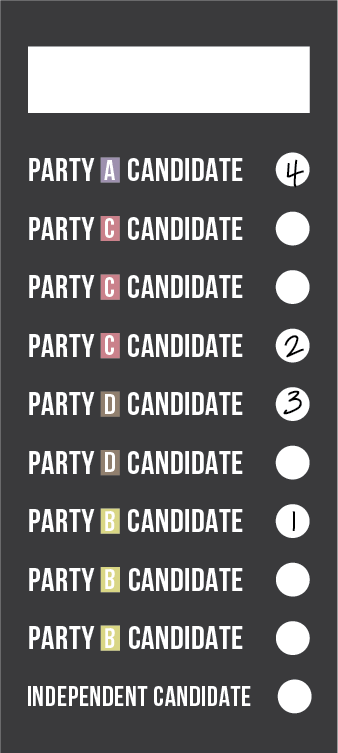Podcast for October 2018: The case for Pro Rep
In this Pro Rep deep dive, Seth Klein, the director of the B.C. chapter of the Canadian Centre for Policy Alternatives, dispels the myths of the No side, explains what proportional representation really is and how it will fix our democracy, and describes what your three Pro Rep options on the ballot are.
This episode was recorded on Coast Salish territory.
Please note: This episode was recorded before Elections BC extended their deadline. Please ensure Elections BC receives your ballot by December 7 at 4:30 p.m.
Take action:
Register to vote
Talk to your friends about Pro Rep — sign up here for great resources
Volunteer to call your fellow British Columbians
Write a letter to the editor
There are so many reasons to vote to change our electoral system and to transform our politics. Ultimately, I just think we deserve a democracy where we get to vote for what we want and not strategically against who we most fear. We deserve to be liberated to vote our values and to feel safe knowing that our votes will not be wasted. Under Pro Rep that will be the new normal.
What is proportional representation?
Pro Rep isn’t a system, it’s a principle. That’s why we have three types on the referendum ballot. Very simply, it means that the proportion of votes cast in an election will be reflected in the proportion of seats in the legislature. So, a party with 40 per cent of the votes, will get 40 per cent of the seats.
Currently in Canada we use a system called First Past the Post, which gives 100 per cent of the power to the party that wins the most votes — even if it’s only 40 percent of the votes. That means a lot of voters are not represented in the legislature.
Isn’t First Past the Post the norm for democracies across the world?
No. Only four democracies exclusively use First Past the Post: Canada, the U.S., the U.K. and India. Eighty-five per cent of developed countries use some sort of proportional voting system.
Is Pro Rep more likely to delivere far right extremist governments?
If we look at governments elected under First Past the Post, we see Donald Trump in the U.S., Doug Ford in Ontario, Theresa May in the U.K., Narendra Modi in India — all governments with arguably radical right wing agendas.
Considering that most of the democratic world uses proportional representation, cherry-picking examples of fascist governments to try to scare British Columbian voters is a weak argument. The rise of radical governments is not linked to any one type of voting system. Since Pro Rep is designed to reflect the wishes of voters, the only way you could elect a radical neo-nazi party in B.C. is if you have a lot of radical neo-nazi voters.
Does Pro Rep eliminate local representation? Will I still have an MLA?
You will still have a MLA under any of the three Pro Rep systems offered in the referendum. If anything, your local representation will be enhanced, because you are more likely to have access to a MLA that reflects your values.
Additionally, under First Past the Post, MLAs are more likely to tow the party line and represent what the leader of the party thinks, rather than the voters in their riding. And they don’t have to worry about voters, because they can get elected with less than 50 per cent of the votes.
How is Pro Rep more stable?
When parties have to join together to form governments, it forces cooperation and we avoid “policy lurch.” Policy lurch occurs when a new government is elected and spends a lot of time and money undoing the policies of the last government. It’s not good for business — how can a business invest in an economy that might be changed in four years? And it’s not good for our democracy. If governments have to cooperate to make policy, these policies are less likely to be drastic shifts.
Since the legislature will be designed to reflect the popular vote more proportionately, we will be less likely to have drastic swings in government. Small changes in the popular vote will equal small changes in the government.
What are the benefits of Pro Rep?
Better policy: Democracies that use proportional representation produce better policies. Pro Rep countries have less income equality and better environmental policies — their share of greenhouse gas emissions are going down. They have better scores on the UN Index of Development, which takes into account education and health care. Countries that use proportional representation outperform countries that use FPTP on measures of democracy, quality of life, values of tolerance, environmental policy and fiscal policy.
More diversity: Pro Rep countries have governments that better reflect who we are. They have better gender balance and better representation of racialized and Indigenous people.
Higher voter turnout: On average Pro Rep countries voter turnout is five percentage points higher than countries that use First Past the Post — for youth the turnout is twelve percentage points higher.
What are the three options for Pro Rep systems on the ballot?
There are some important things to note: All three systems are a huge improvement over the current system. All produce proportional outcomes. All preserve and actually enhance local representation. And all are made-for-B.C. models.
Dual Member Proportional (DMP):
- Smaller urban ridings would be merged into larger ridings.
- Parties nominate candidates, like they do now, but they would nominate two.
- You have one vote for a pair of candidates.
- The first seat goes to the first person in the pair and that person would be elected based on the amount of votes in the riding, just like we do now.
- The second seat would be chosen based on the proportion of votes for parties across the province.

Dual Member Proportional ballot example. Source: ElectionsBC
Mixed Member Proportional (MMP):
- Provincial ridings would grow by two-thirds, but still be slightly smaller than they are federally.
- You get two votes: one for your local candidate and one for a regional party representative.

Mixed Member Proportional ballot example. Source: ElectionsBC
Rural-Urban:
- Rural areas would use MMP (see above).
- Urban and suburban ridings would use STV. Urban ridings would be combined into larger ridings. Voters in these ridings would rank the candidates in their order of preference.

Rural-Urban Proportional ballot example. Source: ElectionsBC
What if it doesn’t work?
If B.C. votes for proportional representation this fall, we would get to test drive the system for two elections, then decide if we want to keep it. This is a pretty great option. If it doesn’t work for B.C., we can change back. But it’s worth noting — no country has ever changed back from a Pro Rep system when given the chance.
Deeper reading:
We are the company we keep, Lisa Sammartino, Dogwood
Who’s afraid of Pro Rep?, Lisa Sammartino, Dogwood
What exactly is proportional representation?, Arie Ross, Dogwood
A little bit country, a little bit rock ‘n’ roll, Dave Mills, Dogwood
The case for electoral reform, Policy Note, Seth Klein and Vyas Saran
How electoral reform enhances local representation, Policy Note, Seth Klein
Electoral reform is simple, actually, Policy Note, Seth Klein and Vyas Saran
Take action:
Register to vote
Talk to your friends about Pro Rep — sign up here for great resources
Volunteer to call your fellow British Columbians
Write a letter to the editor
Subscribe to the Dogwood Podcast:




Why didnt you give the option to share this post? Missed opportunity.
Hi Dianne, if you click the buttons at the top and bottom of this page, you should be able to share it through your favourite social media platform or send it by e-mail or text to a friend. Hope this helps! – Lisa